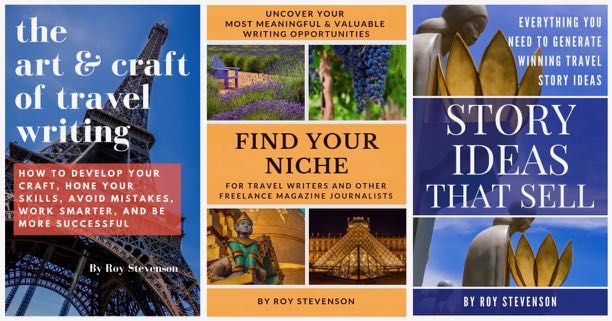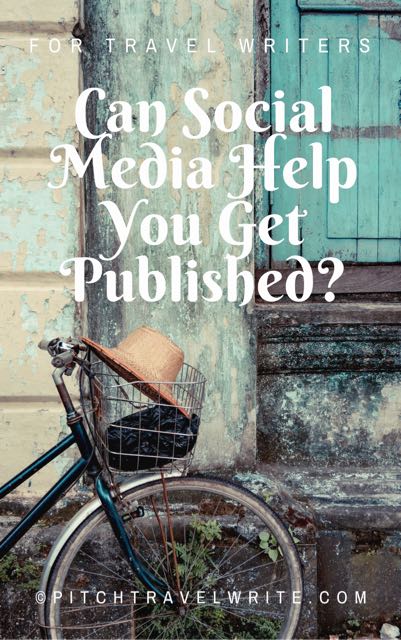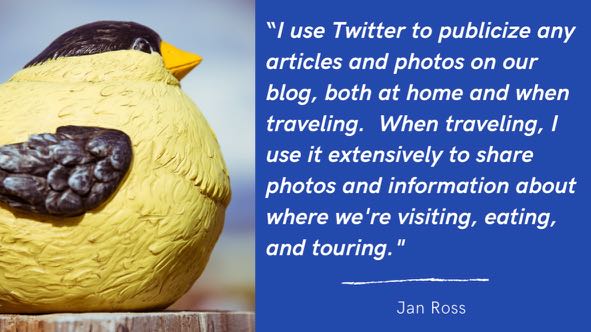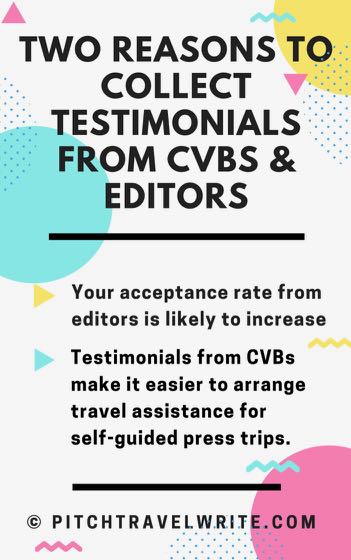- Home
- Business Basics for Travel Writers
- Facebook Tips - Social Media
Facebook Tips for Travel Writers
By Roy Stevenson
Here are some Facebook tips to enhance your travel writing image. It's a powerful tool for travel writers because it improves your media exposure, boosts your influencer ratings, gives you credibility, helps you network with other writers and editors, and provides many other benefits.
According to the book, Mastering The New Media Landscape by Barbara Henricks and Rusty Shelton, Facebook is far from a spent force and it's still a popular platform. More people use Facebook than any other social media other than YouTube.
If you're not using Facebook, you might want to consider these 2019 statistics from Pew Research:
1. With the exception of YouTube, no other major social media platform comes close to Facebook in terms of usage.
2. Of the U.S. adults that use Facebook, the majority (74%) use it at least once a day.
3.
Facebook is popular among all demographic groups. But there are
differences: more women use it than men and more people with college
degrees use it than those without. It's still popular with young people
(79% usage by 18-29 year olds), and usage by older people has doubled
since 2012.
Given the benefits and the usage, I think travel writers need a Facebook presence. So here are my Facebook tips on what constitutes an image-enhancing Facebook page, along with some advice on what to avoid posting. This applies to any social media you're using. I'm using Facebook as a generic description for social media in general, and also because I think it's still a powerful form of social media for travel writers.
Facebook Tips about Photographs
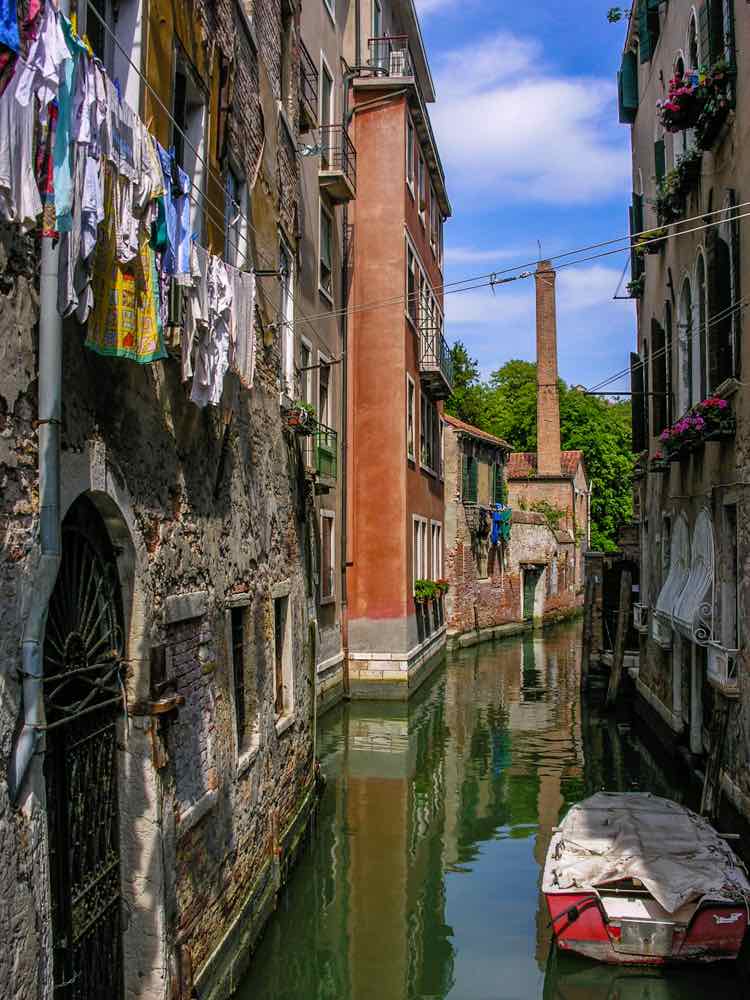 A quiet canal in Venice, Italy.
A quiet canal in Venice, Italy.The first of my Facebook tips is to place at least one accompanying photograph with every Facebook post to get our attention. Posts without images are bland and unappealing and do little to stimulate our imagination.
Photos, on the other hand, liven up Facebook posts and draw our attention to them. Pictures help us understand your accompanying post better and clue us in on your topic.
The image you post can relate directly to your article, or could just be a standard ‘head shot’ of your bright and smiley face (not sullen and glum!).
Always caption your travel photos. Although you may know where the photo was taken, most people will not be able to identify the place. It’s really irritating to see a gorgeous travel landscape or a mystifying tourist attraction and not know where or what it is. Clue us in with a caption!
If you have one spectacular photo you’d like to share, post it individually so as not to divert your reader’s attention from it. And—if it’s such a noteworthy photo—write a lengthier caption about it.
Don’t be afraid to post the occasional photo that makes you look klutzy or silly. It’s okay to show your Facebook friends that you have a sense of humor.
But, don’t post klutzy photos of other people on your site. It usually doesn’t go down too well with them.
When You Post Photo Galleries . . .
Feel free to create photo galleries, but bear in mind that your Facebook page will only accommodate five visible images. Every photo past your fifth will not be visible on your Facebook page.
So when it comes to Facebook tips about photos, I'd say restrain yourself. If you post more than five images, you’ll lose a high percentage of readers who can’t be bothered opening up your gallery to flip through them all.
I’ve also noticed that when I post several photos, they don't appear in their entirety unless I click on them individually. Your photos may appear to have bits chopped off at the sides. Be aware of how Facebook crops your photos when doing your uploads.
Magazine Covers are Important!
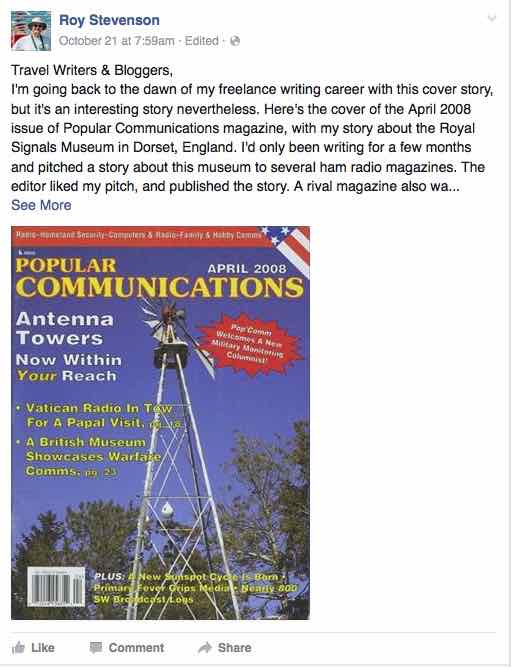
I’ve mentioned this before, but it’s worth mentioning again as one of the Facebook tips. Use photos to improve your travel writing credibility and post the covers of magazines containing your latest articles on your Facebook site.
A nice crisp magazine cover photo is perfect for conveying your chops. It graphically shows that you have been published—in print, no less.
In each of these posts tell a little story about how you broke into that magazine. These stories are popular and tend to accumulate a lot of “Likes”. Show your friends how you manage to wrangle your stories into so many magazines.
If your story is online, include an image and post a link to the story.
Facebook Tips about When to Post
Everyone’s schedules are different, so here’s when I post and why:
If I’m on a press trip, I post a single roundup gallery and story every evening, versus sending photos separately to my Facebook site throughout the day. On a press trip, I believe that a collective description of each day’s activities is more effective and impressive than doing piecemeal posts throughout the day.
Facebook Tips: What Not to Post
The idea behind your writer’s Facebook site is to impress upon magazine editors and tourist destination media reps that you are an accomplished and prolific travel writer. Using Facebook to promote your travel writing has a very similar function to your website—it’s just more chatty and low-key than your writers website.
As a general guideline, your behavior on Facebook should be similar to how you behave at a cocktail party - stay away from indiscreet political and religious statements.
In fact, avoid whining about anything — especially a destination where you’re being hosted! That would certainly be a deal breaker for any tourism media rep considering hosting you for a Fam tour or press trip.
Venting about a magazine editor who has just jerked you around will likely cause other magazine editors visiting your site to drop you like a hot potato. Editors prefer to avoid negative and high-maintenance writers (don’t we all?).
Don’t use your Facebook site to . . .
• Air your dirty laundry
• Complain about your medical problems
• Make snarky comments about other people
• Boast about your excessive drinking, drugs, or other bad habits
• Rant about society’s injustices or man’s inhumanity to man
• Post selfies - this will not enhance your image.
These things are personal and won’t portray a professional front to magazine editors and destination media PR reps. Tempting as it might be to vent about dentists who kill defenseless lions, or to pillory the current idiot-of-the-week, leave this stuff out.
Facebook makes it easy to set up pages for your brand or your business - use these pages for your professional image and keep your personal page limited to friends and family, if you need a personal page. If you mix up personal and professional, be aware that anything personal you post can and probably will be used against you by judgmental editors.
Facebook (and social media) Addiction

This Facebook tip is about how you spend your time. It’s so very easy to disappear down the Facebook rabbit hole and become obsessed with seeing what your friends and acquaintances are doing or publishing.
Facebook is a particularly seductive time vortex and can cost you countless hours of productivity—so don’t go there. I try to spend less than 30 minutes/day on Facebook. I don’t always succeed, but I focus on my posts first and set those as my priority.
Put a reasonable time limit on how long you will spend on social media. Then schedule you social media time for late in the day when your energy level drops. Spend you creative hours earlier in the day dreaming up story ideas and pitching your stories to magazines.
Do You Still Need a Writer's Website?
Beyond my Facebook tips, I believe the most important thing you can do is set up a professional writer’s website for your travel writing business. Facebook is not a replacement for a professional website. It's a supplement to your writers website.
Your professional website is the best way to show your work to an editor, and to show tourism PR’s that you’re a professional. Once it’s set up, it’s very easy to maintain. People who use Facebook as their "website" are making a professional business mistake.
Facebook is a good supplement to your website. Use it as a fun and dynamic way to let your personality shine through. With tact and common sense your posts will show CVBs and editors your delightful social side.
Break into Travel Writing
with the Creative Pack
The Creative Pack includes 3 eBooks that are the starting point for every travel writer: dreaming up unique story ideas that you can sell, finding the best writing niches for you based on your interests, passions and experience, and the art & craft of travel writing. They’re the pieces of the puzzle that come before you ever write a query letter to sell your articles to magazine editors.
If you're just getting started in travel writing, this group of resources will help you improve your craft, generate story ideas that sell, and develop your own unique and meaningful niche.
These eBooks can be purchased separately, but when you buy the bundle you'll save more than 10% off individual prices! Learn more here ...
More related articles that will interest you:
Press Trips for Travel Writers
Enhance Your Travel Writing Image Using Facebook
Your Professional Writers Website

Roy Stevenson is a professional travel writer and the author of www.PitchTravelWrite.com. Over the past ten years, he’s had more than 1000 articles published in 200 magazines, trade and specialty journals, in-flights, on-boards, blogs and websites and has traveled on assignment around the U.S. and to dozens of international destinations.
IF YOU ENJOYED THIS POST, GET UPDATES. IT'S FREE.
